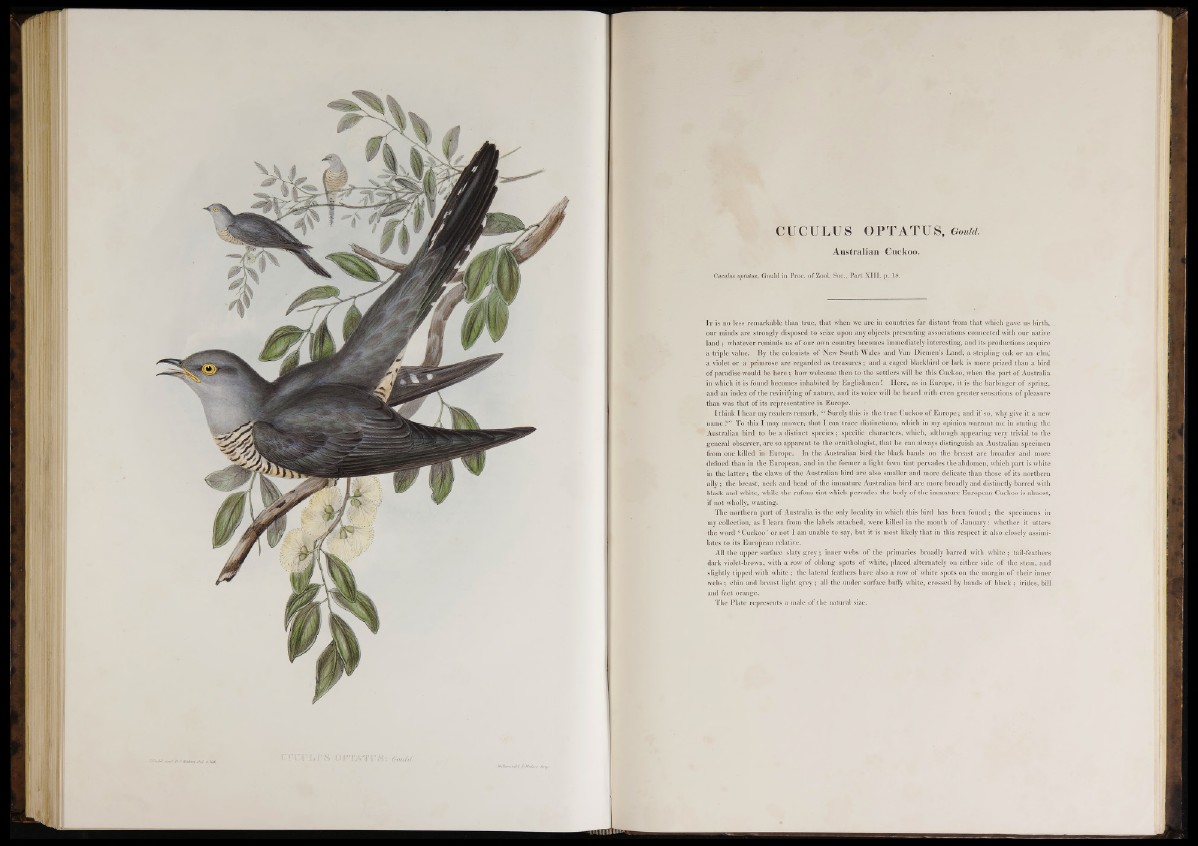
CUCULUS OPTATUS, g ouid.
Australian Cuckoo.
Cuculus optatm, Gould in Proc. of Zool. Soc., Part XIII. p. 18.
It is no less remarkable than true, that when we are in countries far distant from that which gave us birth,
our minds are strongly disposed to seize upon any objects presenting associations connected with our native
land ; whatever reminds us o f our own country becomes immediately interesting, and its productions acquire
a triple value. By the colonists of New South Wales and Van Diemen’s Land, a stripling oak or an elm,"
a violet or a primrose are regarded as treasures; and a caged blackbird or lark is more prized than a bird
of paradise would be here; how welcome then to the settlers will be this Cuckoo, when the part o f Australia
in which it is found becomes inhabited by Englishmen! Here, as in Europe, it is the harbinger o f spring,
and an index o f the revivifying of nature, and its voice will be heard with even greater sensations of pleasure
than was that of its representative in Europe.
I think I hear my readers remark, “ Surely this is the true Cuckoo of Europe; and if so, why give it a new
name ?” To this I may answer, that I can trace distinctions, which in my opinion warrant me in stating the
Australian bird to be a distinct species; specific characters, which, although appearing very trivial to the
general observer, are so apparent to the ornithologist, that he can always distinguish an Australian specimen
from one killed in Europe. In the Australian bird the black bands on the breast are broader and more
defined than in the European, and in the former a light fawn tint pervades the abdomen, which part is white
in the latter; the claws of the Australian bird are also smaller and more delicate than those o f its northern
ally ; the breast, neck and head of the immature Australian bird are more broadly and distinctly barred with
black and white, while the rufous tint which pervades the body o f the immature European Cuckoo is almost,
if not wholly, wanting.
The northern part of Australia is the only locality in which this bird has been found ; the specimens in
my collection, as I learn from the labels attached, were killed in the month of January: whether it utters
the word ‘ Cuckoo’ or not I am unable to say, but it is most likely that in this respect it also closely assimilates
to its European relative.
All the upper surface slaty grey; inner webs o f the primaries broadly barred with white; tail-feathers
dark violet-brown, with a row o f oblong spots of white, placed alternately on either side o f the stem, and
slightly tipped with white ; the lateral feathers have also a row of white spots on the margin of their inner
webs; chin and breast light grey ; all the under surface buffy white, crossed by bands o f black ; irides, bill
and feet orange.
The Plate represents a male of the natural size.